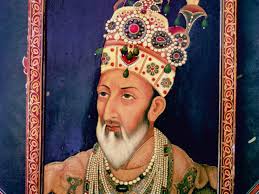Modern Indian History Notes-Bahadur Shah I-For W.B.C.S Examination
Bahadur Shah I
- On Aurangzeb’s death, his three sons fought among themselves for the throne. The 65-year old Bahadur Shah emerged victorious. He was learned, dignified, and deserving.Continue Reading Modern Indian History Notes-Bahadur Shah I-For W.B.C.S Examination.
- Bahadur Shah followed a policy of compromise and conciliation, and there was evidence of the reversal of some of the narrow-minded policies and measures adopted by Aurangzeb. He adopted a more tolerant attitude towards the Hindu chiefs and rajas.
- There was no destruction of temples in Bahadur Shah’s reign. In the beginning, he made an attempt to gain greater control over the regional states through the conciliation; however, dissensions developed among the regional kingdoms (including Rajput, Marathas, etc.); resultantly, they fought among themselves as well as against Mughal Emperor.
- Bahadur Shah had tried to conciliate the rebellious Sikhs by making peace with Guru Gobind Singh and giving him a high mansab (rank). But after the death of the Guru, the Sikhs once again raised the banner of revolt in Punjab under the leadership of Banda Bahadur. The Emperor decided to take strong measures and himself led a campaign against the rebels, soon controlled practically the entire territory between the Sutlej and the Yamuna, and reached the close neighborhood of Delhi.
- Bahadur Shah conciliated Chatarsal (the Bundela chief, who remained a loyal feudatory) and the Jat chief Churaman, who joined him in the campaign against Banda Bahadur.
- In spite of hard efforts of Bahadur Shah, there was further deterioration in the field of administration in Bahadur Shah’s reign. The position of state finances worsened as a result of his reckless grants and promotions.
- During Bahadur Shah’s reign, the remnants of the Royal treasure, amounting to some total 13 crores of rupees in 1707, were exhausted.
- Bahadur Shah was examining towards a solution of the problems besetting the Empire. He might have revived the Imperial fortunes, but unfortunately, his death in 1712 plunged the Empire once again into civil war.


 Toll Free 1800 572 9282
Toll Free 1800 572 9282  mailus@wbcsmadeeasy.in
mailus@wbcsmadeeasy.in


















































































































